-
Are you a Tarantula hobbyist? If so, we invite you to join our community! Once you join you'll be able to post messages, upload pictures of your pets and enclosures and chat with other Tarantula enthusiasts. Sign up today!
You are using an out of date browser. It may not display this or other websites correctly.
You should upgrade or use an alternative browser.
You should upgrade or use an alternative browser.
beetle
-

US HOLIDAY SALE 20%-35% OFF Tarantulas, True Spiders, Scorpions and Centipedes For Sale
HOLIDAY SALE 20-35% OFF Use code: HOLIDAY20 for 20% Off Orders of $75 or more Use code: HOLIDAY35 for 35% Off Orders of $150 or more Sale starts now and will end Christmas Eve 12/24/23 at Midnight PST. You must meet the min order for the coupon to work. This does not include tax or shipping...- thespiderroom
- Thread
- beetle bug centipede for sale scorpion tarantula tarantulas tarantulas for sale
- Replies: 0
- Forum: For Sale
-

US Midwest exotics invertebrate plushies
Midwest exotics invertebrate plushies Pink and green mantis https://www.midwestexotics.net/product-page/praying-mantis-plush-doll Hercules beetle https://www.midwestexotics.net/product-page/hercules-beetle-insect-plush-doll Spider https://www.midwestexotics.net/product-page/spider-plush-toy... -
P
US LARGE SALE/TRADE LIST
Large Sale/Trade List Tarantulas [$45] Neoholothele incei (Trinidad Olive) 2.5”-3” FEMALE [$8] Tliltocatl albopilosus “Nicaraguan” (Curly Hair) 1”-1.5” 6 AVAILABLE Scorpions [$10] Paravaejovis confusus (Yellow Ground) [$4] Paravaejovis spinigerus (Stripe Tailed) 2i 20+ AVAILABLE [$10]...- proarth614
- Thread
- beetle harvestman scorpion tarantula true spider vinegaroon whipscorpion
- Replies: 4
- Forum: For Sale
-
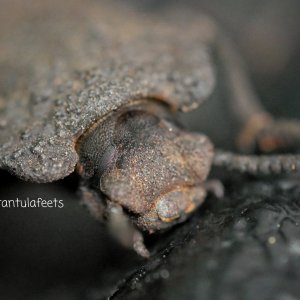
Diabolical Ironclad Beetle
Found this guy while while camping.- Tarantulafeets
- Media item
- beetle diabolical insect ironclad
- Comments: 0
- Album: Tarantulafeet's Album
-
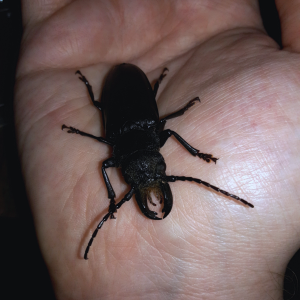
Nothopleurus lobigenis
an interesting prionid beetle with stag beetle-like mandibles.- MBullock
- Media item
- beetle cerambycidae coleoptera insect
- Comments: 0
- Album: Hexapoda
-
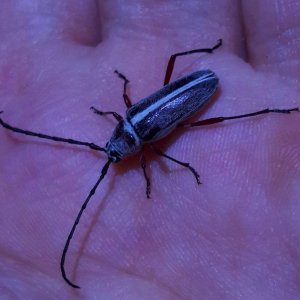
Plionoma suturalis
Host plants are Prosopis sp.- MBullock
- Media item
- beetle cerambycidae coleoptera longhorn
- Comments: 0
- Album: Hexapoda
-

Cryptoglossa muricata and Asbolus laevis
Asbolus laevis- the smooth death feigning beetle, and Cryptoglossa muricata- the muricate death-feigning beetle. Both are named for their shell textures- 'Laevis' means 'Smooth', whilst 'Muricata' means 'covered in small sharp points', a reference to the somewhat spiny texture of the shell.- MBullock
- Media item
- beetle cryptoglossini death feigning beetles tenebrionidae
- Comments: 0
- Album: Hexapoda
-

Moneilema gigas 'giant cactus longhorn' female
This genus mimics eleodes with its shiny black appearance. found mostly on Cylindropuntia or opuntia. Like most longhorns, these stridulate when held. Males are more elongate, with a body-shape similar to eleodes armata, the desert stink-beetle.- MBullock
- Media item
- beetle cactus longhorn
- Comments: 0
- Album: Hexapoda
-
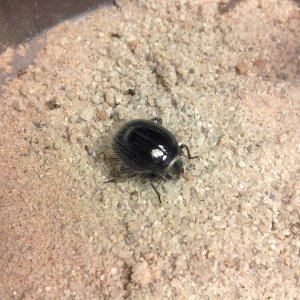
Edrotes ventricosus
A cute little tenebrionid native throughout deserts in the southwest. larvae feed on roots, adults feed on grasses and amaranths- MBullock
- Media item
- beetle desert edrotes tenebrionidae
- Comments: 5
- Album: Hexapoda
-
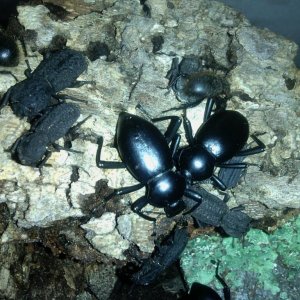
Coelocnemis magna 'Greater false stink-beetle'
(the big shiny ones) These- like all coelocnemis species- are mimics of the genus Eleodes, but cannot spray a defensive liquid, they instead drop a very strong smelling fecal pellet. their golden feet easily distinguishes them from eleodes. Larvae have a powerful bite, and can draw blood easily.- MBullock
- Media item
- beetle coelocnemis eleodes tenebrionidae
- Comments: 0
- Album: Hexapoda
-
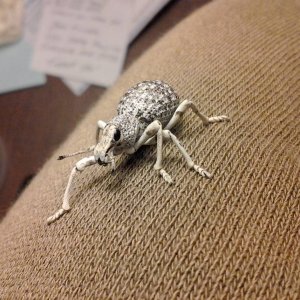
Ophryastes argentatus 'Silver Desert weevil'
Much larger than the other species in this genus, these can reach 2cm or greater in size. like the majority of the species in this genus, they can be readily found on creosotebush.- MBullock
- Media item
- beetle desert ophryastes weevil
- Comments: 0
- Album: Hexapoda
-
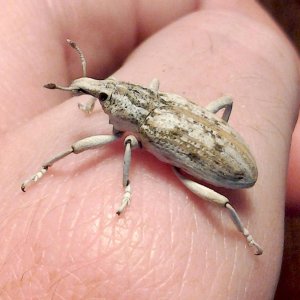
Apleurus albovestitus
another large desert weevil, this time in the cylindrical weevil family. these are mostly found on saltbush (atriplex) and can be found in huge numbers around the salton sink region- MBullock
- Media item
- beetle desert saltbush weevil
- Comments: 0
- Album: Hexapoda
-
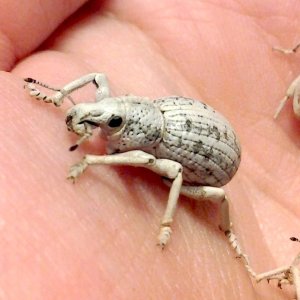
Ophryastes desertus
Widespread throughout the mojave and colorado desert, the most common of the 'desert weevils'. Like nearly all ophryastes species, these are mostly found on creosotebush- MBullock
- Media item
- beetle desert ophryastes weevil
- Comments: 0
- Album: Hexapoda
-
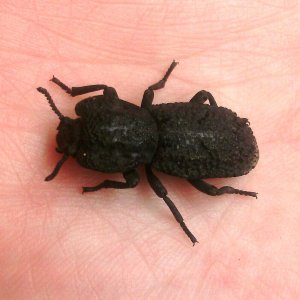
Phloeodes diabolicus 'Diabolical ironclad beetle'
The powerful shell of this species allows it to easily survive when hikers step on them. breeding is difficult but not impossible. the larvae are predaceous, with powerful mandibles. Their host tree is Platanus racemosa, the california sycamore, within the loose outer cork-like bark.- MBullock
- Media item
- beetle diabolical ironclad
- Comments: 0
- Album: Hexapoda
-
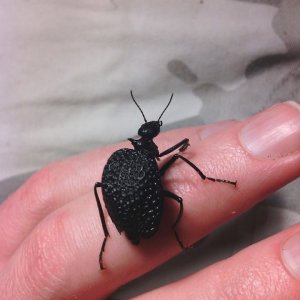
Cysteodemus armatus -'Inflated blister beetle'
Like all blister beetles, this genus is a parasitoid of orhoptera, this species targets solitary nesting bees and wasps and can be found all over the desert floor in spring. they're often seen coated heavily with so much pollen they appear to be yellow or white at times.- MBullock
- Media item
- beetle blister
- Comments: 1
- Album: Hexapoda
-
E
Large amount of mold in mealworm container
Hi all, If there is another post about this then I apologize, but I looked around and couldn't find anything that would really help me. So a week or two ago I put a couple baby carrots in with my mealworms. They're just in the default container, plastic one about 5 inches in diameter, from...- etta
- Thread
- beetle darkling mealworm mold
- Replies: 5
- Forum: Tarantula Feeding and Feeder Insects
-

Tiger Beetle
I want one of these now!!! lol Seriously though, I will be looking very carefully on my next trip to the Mallee!- Dave Jay
- Thread
- beetle beetles tiger beetle
- Replies: 4
- Forum: Invertebrate Pet Talk
-

Beetles in the Australian Murray Mallee Region.
These large beetles were abundant under large pieces of cover, mostly human rubbish like sheets of metal or wood. As yet I haven't tried to ID them, but they are quite large, well over an inch long in the body with long legs. My wife caught one and put it in a tub but it made so much noise we...- Dave Jay
- Thread
- australian beetle
- Replies: 1
- Forum: Invertebrate Pet Talk